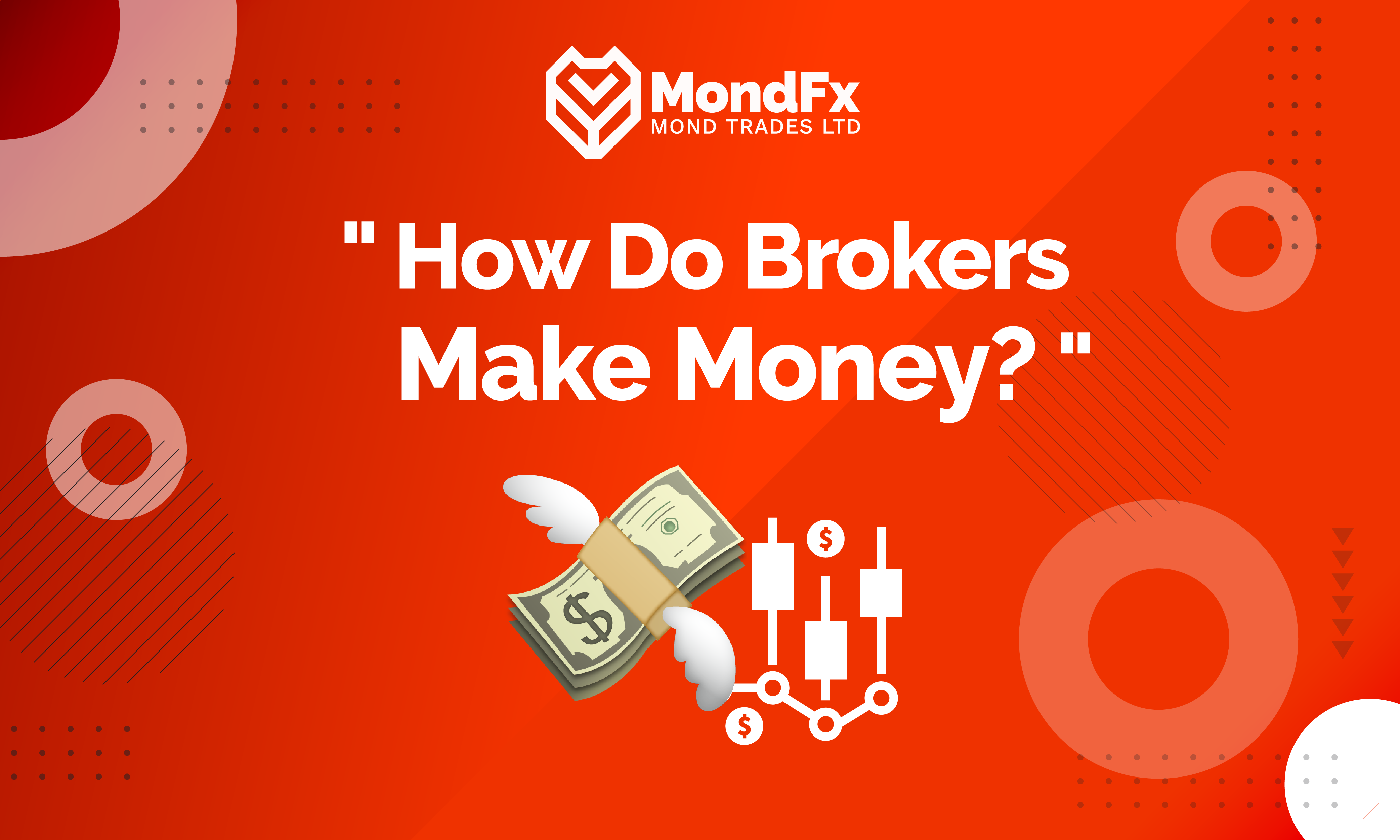Models of Income for Forex Brokers
– Brokerage Fees (including spread, commission, swap)
– Additional Services (trading signals, analytical tools)
– PAMM and MAM Accounts
– Marketing and Customer Referrals
– Broker’s Business Activities
– Examining the Role of Brokers in Transactions:
– Why do brokers have the right to take spreads?
– Are you a client of a Forex broker or its customer?
-Risk Management in Forex Brokerage:
– How is risk management implemented by Forex brokers?
Income Models of Forex Brokers
Forex brokers utilize various income models to generate revenue. The income model refers to the methods used by currency trading companies to earn money from their clients’ transactions. It is important to note that choosing the right broker is the first step toward success in financial markets, as they can use their expertise to assist you with the timing of trades, risk management, and making correct decisions in the market. Therefore, it is essential to familiarize yourself with the different types of brokers and their applications beforehand.
Income Models of Forex Brokers
Brokers or brokerages are companies that allow traders to participate in the market. These brokers come in various types and models, each with its unique advantages and disadvantages. Another name for these brokers is Dealing Desk, meaning trading desk.
Brokerage Fees
Brokerage fees are one of the most important income models for brokers and include the following:
– Spread: This model, which is one of the most common income models for Forex brokers, refers to the difference between the buying price and the selling price of a currency pair or any other financial asset. Brokers use this price difference and the fees derived from it to provide trading services.
– Commissions: Some brokers use this method for executing trades instead of using spreads. In this method, traders pay a commission to the broker for each trade instead of paying a spread.
– Swap Fees: In this case, brokers charge traders a fee as a swap interest rate for maintaining certain open positions overnight.
– Managed Accounts: In this method, brokers allow traders to manage accounts through professional individuals. Brokers earn from the commission or profit share derived from the trades to provide these services.

Additional Services
Trading brokers often provide additional services to their traders to assist them both in executing trades and in market analysis. These additional services, which encompass a wide range, include:
– Trading Signals: Brokers provide their traders with trading signals, which are usually based on fundamental or technical analysis, chart patterns, technical indicators, and economic events. These signals typically include:
– Buy or sell recommendations
– Entry and exit points
– Technical and fundamental analyses
– Important news and events
– Analytical Tools: The analytical tools available in the Forex market are also diverse and help traders better understand patterns, trends, and market conditions. Some of the most important analytical tools commonly found in financial markets include:
– Charts
– Technical indicators
– Chart patterns
– Fundamental analysis
– Analytical software
– PAMM and MAM Accounts: PAMM (Percentage Allocation Manager) and MAM (Multi-Account) accounts are two examples of managed accounts in the financial market that allow traders to manage their investments collectively. These accounts enable account managers to grant access to selected candidates for managing investments and execute trades on their behalf. In MAM accounts, the account manager can execute a trade for multiple accounts and distribute the trades and profits and losses among all accounts.

Marketing and Customer Referrals
These two methods are important for attracting and retaining clients, which we will examine separately.
– Marketing: Marketing is a process through which users attract new clients, retain existing customers, and increase brand awareness. Initial actions such as conducting market research, defining marketing strategies, public relations, advertising, sales, and after-sales service are required. The main goal of this section is to increase sales, enhance brand recognition, and improve customer experience.
– Customer Referral: Customer referral is also an effective method for attracting new clients, done by current clients or other colleagues for business consultations. This method emphasizes trust and relationships among individuals and is usually accompanied by some discounts, rewards, or incentives for clients to introduce others. Both methods can effectively result in business growth and development, and by employing them, one can certainly witness improved financial results and increased business interaction.
Broker’s Business Activities
All actions and services that brokers provide to carry out financial transactions for clients lead to their income and yield significant profits. Some of the typical business activities carried out by brokers include:
– Conducting Financial Transactions: This includes various financial activities, such as buying and selling foreign currencies, stocks, securities, and providing trading services in the Forex market.
– Investment Advisory: Offering financial and investment advice to choose the best investment strategies based on objectives and risks.
– Asset Management: Providing management services to sensitive clients who want to manage their capital professionally. For this purpose, they offer separate and professional capital management platforms.
-Training and Awareness: Providing financial education and increasing awareness regarding successful investment and trading methods to clients and the public is crucial for participation in the financial market.
– Market Analysis: Providing market analyses and financial forecasts for clients to facilitate better decision-making is also of special importance.
Examining the Role of Brokers in Transactions
The role of brokers in the financial transaction process is one of the key and effective factors significantly impacting traders’ success in the market. Some of the main roles of brokers include:
– Executing Trades: Brokers have a crucial and essential role in executing trades. They are responsible for transferring clients’ buy and sell orders to the market and executing these orders. Brokers must ensure that trades are executed accurately and swiftly.
– Providing Financial Advisory: Brokers should act as financial advisors for their clients, guiding them in making the best decisions and strategies. They should assist clients in all market phases, including analysis, financial forecasting, and especially risk management.
– Providing Information and Market Analysis: Brokers support clients in making informed decisions by providing and transferring market information and analysis, assisting them in selecting the correct chart patterns and technical indicators.

Why Do Brokers Have the Right to Charge Spreads?
Brokers, or traders, often view spreads as one of their revenue sources in financial transactions. They charge clients fees in exchange for the services they provide. Some of the essential services that justify brokers’ right to collect spreads include:
– Quick Execution of Trades
– Providing Access to Financial Markets
– Market Analysis and Evaluation
– Risk Management
– Managing Price Fluctuations
– Covering Technical Support and Costs
Are You a Client of a Forex Broker or Its Customer?
Brokers are essentially traders or intermediaries who execute transactions on behalf of clients (principals). In simpler terms, brokers conduct trades on behalf of their clients; therefore, brokers are agents of Forex brokers, and clients are the principals. Clients of brokers make investments, and brokers execute trades on their behalf.
Risk Management in Forex Brokerage
Brokers must protect clients from risks in all their market interactions and assist them in managing their trade risks. One of the most critical actions for this is to inform them about the various risks associated with trades and the potentially irreparable consequences.
How is Risk Management Implemented by Forex Brokers?
Risk management, which is a vital and necessary aspect of financial activities in the large Forex market, is executed through various methods, some of the most important of which include:
– Utilizing Risk Management Techniques: Employing techniques such as Stop Loss, Take Profit, and Margin Call.
– Setting Risk Limits: Establishing limits regarding capital, trade volumes, and the use of financial leverage.
– Risk Analysis: Employing technical analysis, fundamental analysis, and financial risk analysis.
– Setting Risk Management Policies: Establishing policies and ensuring that these rules are adhered to by employees.

